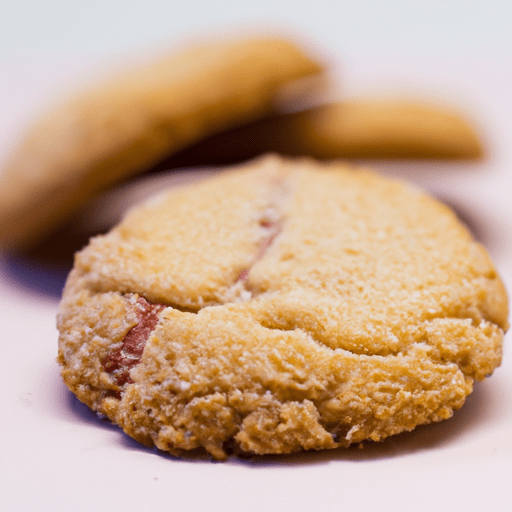The Delightful Delicacy: Shortbread Cookie
Shortbread cookies are a classic treat that never fails to bring joy to any occasion. With their buttery texture and melt-in-your-mouth goodness, these delectable cookies hold a special place in the hearts and taste buds of people around the world. In this blog post, we will dive into the history, taste, uses, and nutritional value of these beloved treats.
A Biscuit with British Roots
The origins of shortbread cookies can be traced back to medieval Scotland. Initially known as “biscuit bread,” this recipe consisted of leftover bread dough that was dried out in the oven until it became hardened and crisp. Over time, butter was introduced, transforming the recipe into the shortbread we know and love today. These treats were traditionally enjoyed during festive occasions like Christmas and New Year’s in Scotland.
Indulgent Taste and Texture
Shortbread cookies are characterized by their rich, buttery flavor and crumbly texture. The secret to achieving the perfect shortbread lies in the simplicity of its ingredients: butter, sugar, and flour. The high butter content gives the cookies their distinct taste and melt-in-your-mouth texture. These cookies are not overly sweet, allowing the buttery flavor to shine through.
Versatile in the Kitchen
Shortbread cookies are incredibly versatile and can be enjoyed in various ways. They are often cut into shapes like rectangles, circles, or fingers, and may feature decorative patterns or imprints. These treats can be enjoyed on their own as a simple snack or used as a base for other desserts. Crumbled shortbread cookies make an excellent crust for cheesecakes, pies, and tarts. They can also be used as a topping for ice cream sundaes or as a garnish for pudding. Shortbread cookies are a delightful addition to any dessert platter or afternoon tea.
Nutritional Value for Consideration
While shortbread cookies are undeniably delicious, it’s important to enjoy them in moderation due to their high calorie and fat content. The main ingredients, butter and sugar, contribute to the richness and well-loved flavor of these cookies but also make them a high-calorie treat. However, consuming a shortbread cookie as an occasional indulgence can be a delightful way to satisfy your sweet tooth.
Fun Fact: National Shortbread Day
Shortbread cookies have gained such popularity that they even have their own day of celebration. Every year on January 6th, people around the world gather to celebrate National Shortbread Day. It’s a wonderful opportunity to bake a fresh batch of these delightful treats or explore different shortbread variations, such as adding chocolate chips, citrus zests, or spices to the classic recipe.
In Conclusion
Shortbread cookies are a delightful indulgence that blend buttery goodness, melt-in-your-mouth texture, and a touch of nostalgia. Whether enjoyed on their own or as a key component in a mouthwatering dessert, these treats have rightfully earned their place in the world of baking. Just remember to savor them in moderation and appreciate the craftsmanship that goes into producing such a simple and yet delightful delicacy. Happy baking!
Shortbread Cookie
Origin: Shortbread originated in Scotland during the medieval period. It was initially called “biscuit bread,” as it was made from leftover bread dough that was dried out in the oven. Over time, the yeast in the recipe was replaced with butter, which resulted in a tender and crumbly texture.
Common Uses: Shortbread cookies are often enjoyed on their own or served alongside tea or coffee. They are also used as a base for various desserts, such as pie crusts, tart crusts, and shortbread bars. Shortbread is a popular treat during the holiday season in many countries.
Nutritional Benefits: Shortbread cookies are primarily made with butter, sugar, and flour. While they are delicious, they are not particularly nutritious foods and should be enjoyed in moderation. Shortbread cookies tend to be high in calories due to their butter and sugar content. They also provide some carbohydrates from the flour.
Unique Properties: Shortbread is known for its rich, buttery flavor and its crumbly texture. The high proportion of fat to flour in the recipe gives shortbread its characteristic melt-in-your-mouth consistency. Shortbread dough is typically very delicate, and the cookies are often shaped into rounds, squares, or fingers.
Historical Significance: Shortbread has a long history and has been enjoyed for centuries. In Scotland, shortbread was traditionally associated with various holidays and celebrations, such as Christmas and Hogmanay (New Year’s Eve). It was also considered a special treat during weddings and as a symbol of hospitality. The shape and decoration of the cookie often differed based on the occasion.
Please note that nutritional benefits can vary depending on the specific recipe and ingredients used in homemade or commercially produced shortbread cookies.




Use the share button below if you liked it.
It makes me smile, when I see it.